#raymond e feist
Text

I seem to have accidentally stuck to a theme this month 😅 and only after reading The Study of Poisons did I realise how much, coz even the two without Magician in the title still have magicians as a major part of the story 😅
#poisonstudy#thestudyofpoisons#mariavsnyder#magician#the secrets of the immortal Nicholas flamel#michael scott#the magicians#lev grossman#raymond e feist#riftwar saga
6 notes
·
View notes
Text
Legends
Because this was an anthology of so many different authors, it's a little hard to rate. I ended up skipping a lot because I just didn't like the authors.
Stephen King : The Little Sisters of Elura : 3.5 maybe 4 stars. As usual, there are things I liked and things I didn't like with King's writing. That being said, I haven't read the Gunslinger series yet but was able to read this snippet with ease and rather enjoyed it.
Terry Pratchett : The Sea and Little Fishes : 5 stars. Another series I haven't read yet (but is definitely on my tbr pile), I absolutely adored this. Fun and magical and just overall delightful. Highly recommend for a short, light reading.
Terry Goodkind : The Debt of Bones : 4 stars. I don't think I've ever read any of Goodkind's work, but I found this one interesting of a read and might end up adding the rest of the series to my tbr. I liked the characters and the magic and the world, so it seems likely I'll eventually pick it up.
Orson Scott Card : The Grinning Man : Skipped (Read 1.5 pages and just couldn't)
Robert Silverberg : The Seventh Shrine : Skipped (Read the introduction and was not interested)
Ursula K. Le Guin : Dragonfly : 5 stars. Loved rereading this story (it's found in the Tales of Earthsea volume as well). But I love Le Guin and Earthsea so that will not surprise anyone that knows me.
Tad Williams : The Burning Man : Skipped (read 2.5 pages and just....it's meh. Maybe if I had read the series this would feel like it's going somewhere)
George R.R. Martin : The Hedge Knight : Skipped on Principle. I don't like Martin's writing in general and so I didn't even bother.
Anne McCaffrey : Runner of Pern : 5 stars. Loooooved this. It was so nice to revisit Pern in a story I've never read before. It has me so excited to get to the Pern Reread I'm planning in 2023.
Raymond E. Feist : The Wood Boy : Skipped. (read 5 pages but it was so drrrry.)
Robert Jordan : New Spring : Skipped (meh..........It just didn't interest me.....Rating may change in the future if I ever try the Wheel of Time Series)
Overall, I'll be keeping this brick of a time because of the 3 stories that I enjoyed until such a time I find them in smaller volumes to put on my bookshelf.
Read : Nov 27th - Dec 10th 2022
Rating : 4 Stars
#legands#stephen king#terry pratchett#terry goodkind#orson scott card#robert silverberg#ursula k le guin#tad williams#george r r martin#anne mccaffrey#raymond e feist#robert jordan#so many authors#fantasy#science fiction#large books#pern#tales of alvin maker#memory sorrow and thorn#sword of truth#the riftwar saga#the dark tower
0 notes
Text
#I've been have nostalgic thought on my series and thought I'd see how people feel about theirs#a song of ice and fire#asoiaf#Dune#Wheel of Time#The Dark Tower#The Riftwar Cycle#Shannara#the Shannara chronicles#george rr martin#frank herbert#stephen king#raymond e. feist#raymond e feisty#terry brooks#Robert Jordan#I assume asoiaf will sweep but I keep my hopes up for others with a fighting chance#macs book poll
1K notes
·
View notes
Text
Now that I'm reading books by Pratchett's male contemporaries in the 80s and 90s, I'm realising just how ridiculiously ahead of the curve Terry was in terms of writing complex female characters.
I'm reading through the Riftwar Cycle by Raymond E Feist at the moment and (aside from the sub-series that he co-wrote with Janny Wurts) his writing of female characters is incredibly limited (at least thus far; I'm on 'Shadow Of a Dark Queen' at the moment). Virtually every female character is allocated the singular role of either mother, love interest to a male hero, seductive villianess or sex worker.
This book came out in 1994 but it may as well be 1974 given how one-note the female characters are. And that's not even getting into the constant fridging.
Hoping that Feist's writing for women gets better as the series progresses because jeez...
#booklr#terry pratchett#raymond e feist critical#i think i may read some of janny wurts books#because i'm starting to think it was her side of the writing in 'the empire trilogy' that i enjoyed#i could overlook it somewhat during the initial magician trilogy because it was feist's first releases and he wrote it in the early 80s#but this? raymond get it together already you wrote three books with someone who knew how to do this
151 notes
·
View notes
Text
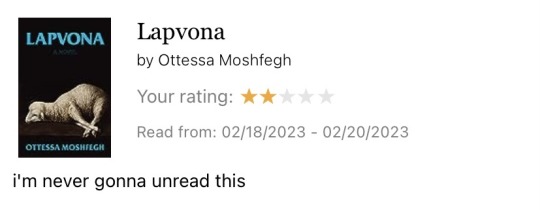
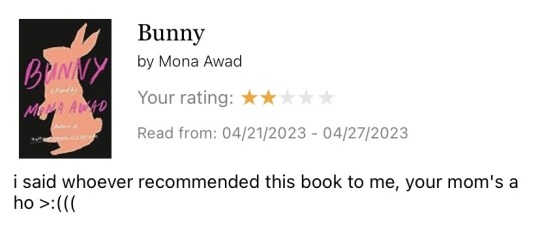





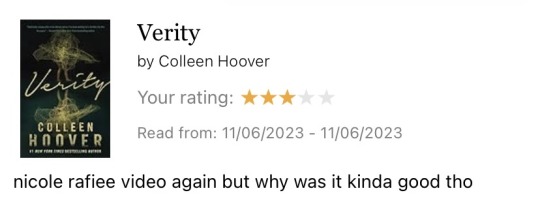
reviews i have written this year on goodreads: a collection
#i think i'm the funniest person alive but no one agrees :/#rose shut up#ottessa moshfegh#mona awad#julia fox#colleen hoover#ali hazelwood#raymond e. feist#c.j. leede
51 notes
·
View notes
Text
“Love doesn’t demand; it accepts. It has taken me my life to learn this."
Raymond E. Feist, Mistress of the Empire
#bookaddict#book quotes#booknerd#booklr#reading#book#booklover#books#bookworm#quote#raymond e. feist#mistress of the empire
5 notes
·
View notes
Text
Decided to reread Magician(1982) by Raymond E. Feist while offline for work and now the riftwar cycle is consuming my every thought. Such a good book and series, highly recommend.
10 notes
·
View notes
Text
AUTHOR EXTRAORDINAIRE

'Writing is hard work; its also the best job Ive ever had.'
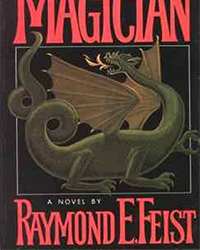
'I don't write fantasy; I write historical novels about an imaginary place.'
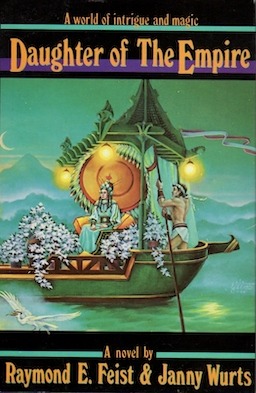
'I won't say that writing is therapy, but for me, the act of writing is therapy. The ability to be productive is good for my mental health. It's always better for me to be writing than vegetating on some couch.'
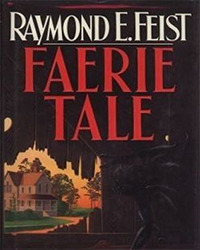
'Mostly I'm writing about people, so I feel constrained to take with me my view of people, my curiosity about how people choose the things they do and why they come to certain decisions in a certain fashion and all the things that drive most writers.'
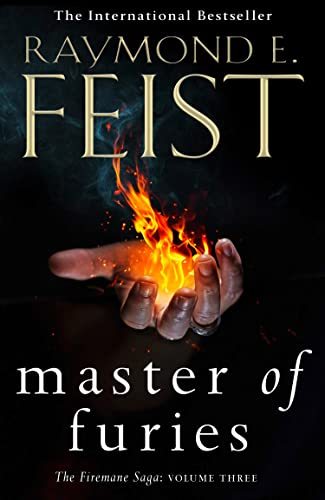
Author Extraordinaire Raymond E Feist
#raymond e. feist#fantasy#author extraordinaire#writing advice#writing inspiration#writblr#books#literature
4 notes
·
View notes
Text
At some point I should re-read Feist's Riftwar books. It's been 5+ years since I read them. I've kept a bunch of them on my shelf for mostly nostalgia reasons at this point.
They were among my first fantasy series obsessions when I was 13/14. I'd love to see if I still like them. 😜
#mostly i remember the big wifeguy energy 90% of the MCs had#cara reads 2024#riftwar#raymond e. feist
2 notes
·
View notes
Text
“The faults we see in others never seem as dreadful as those we see in ourselves.”
- Raymond E. Feist ‘The Riftwar Saga: Magician’
3 notes
·
View notes
Text
I love a good story about an orphan being trained in magic and becoming one of the most powerful wizards ever. No, non that one. I'm referring to Pug of Midkemia, known as Milamber upon the Tsurani.
16 notes
·
View notes
Text
A Pretentious Bitch's Review of Magician: Apprentice by Raymond E. Feist

Rating: 65/100
Summary: A tropey high fantasy journey through a DND-esque, LOTOR-adjacent fantasy world.
I have actually read this book before, as a kid. I don't remember how old I was at the time, but I was much newer to fantasy and much less critical. I remember liking this book pretty well, but getting bored after the first sequel, and honestly that's an assessment I kind of stand by as an adult. Be warned, my review contains spoilers.
Plot: The central plot of the story is an invasion of the fantasy world of Midkemia by another world through "rift portals" by an empire known as the Tsurani. The majority of the story centers around the journey that the central party makes to the capitol in order to ask the king for aid in repelling the invaders, with a pivot towards the end to being about the warfare between the main characters and the invaders. It's also a coming of age for the main character, Pug, who, through several time skips, changes and develops. At the beginning I thought that the story was going to revolve around Pug's development as a magician, since he starts the story a poor magician, then has an incident where he accidentally uses magic to save the princess. Then he proceeds to never use magic again or really learn anything more about magic.
Some aspects of the plot are straight out of Lord of the Rings, especially the sequence where the party goes down into dangerous old unused Dwarven mines in order to pass under the mountains, where they face a dangerous enemy and are forced to leave one of their party behind. Also speaking of that incident, the author set up some tension where Pug was meant to believe that Tomas was lost, then immediately undercut it by showing the reader in the very next chapter that Tomas was alive. Additionally, Pug's reaction to finding out later on that Tomas was alive was never shown.
The early portions of the book that take place at the castle are enjoyable, and so is the journey that the main party makes. However, the war scenes at the end of the book become dull quickly, and I felt bogged down while reading them. The broadening of the story and the loss of connection with Pug and Kulgan, my two favorite characters, bored me.
Prose Quality: Nothing spectacular. It's fairly serviceable fantasy prose, with some decent scenery descriptions, a tendency towards the simplistic, and some moments of hilariously bad writing that I feel any competent editor should have noticed. A standout illustration is "waving aside Tully's comments with a dismissive wave." The author, when he choses to foreshadow something, is also typically VERY heavy-handed with it.
**Characters: **I enjoy Kulgan (the magician) quite a lot, along with Tully, the priest. In my note as I was writing I kept writing "I love Kulgan" over and over again. I'm decently fond of Pug as a character, and I don't mind Tomas. Every single other character I could quite frankly take or leave.
I will also use the space to talk about the names. The names are SO funny, in that way that names in older works of fantasy tend to be. They range from extremely common real world names to comical fantasy names. The great wizard is named Marcos. The main character is named Pug. The king is named Rodric.
I also commend the author for his willingness to let his male characters cry and be immature. Pug is, at the start of the story, a very young man, and he acts like it for the vast majority of the book, in a way that is endearing rather than insufferable. He also cries, over his friend Tomas when he is lost in the mine, and over several other things throughout the story.
Worldbuilding: The worldbuilding, especially when it comes to magic, has some genuinely interesting bits, and I was enjoying the segments with Tomas' armor that he gets from the dragon that he finds in the mine as well (although of course some of the concepts there, especially the idea of a long dead civilization that had control over the dragons, is done to death [although to be fair it likely wasn't done to death at the time of publication]). The worldbuilding on elves, dwarves, and the kingdom in general is pretty typical stuff. This book was based on the author's dungeons and dragons game and it shows. I will say that the medieval aspect of medieval fantasy is REALLY well-handled in this book. Travel times seem relatively realistic, they use carrier pigeons for messages traveling long distances, the characters typically wear tunics and leggings, which, can I just say that most fantasy series don't have the balls to put their characters in leggings, and most of the clothes of the nobility are in garishly bright colors by modern standards, which is, once again, realistic. There is a lot of death in the course of battles, although all deaths are nameless soldiers, no named characters die. (Once again, this is the author's Dungeons and Dragons campaign). There is some genuinely interesting political stuff that pops up midway through the book, with suggestions that in order to repel the invasion the characters involved may have to commit treason, but nothing comes of it.
Action Sequences: Most of the action sequences don't feel very tense. The style is, in my opinion, a bit dry, and especially some of the later scenes while the war is ongoing felt a bit dry and were a slog to get through. Additionally, they felt as though they had very little stakes. All the combat was quite bloody (in a very early sequence in the forest with the Dark Brotherhood [Drow], the party loses more than half of the soldiers they were traveling with) but no named characters ever died, and any time the fate of a main character was in question, that character's fate was IMMEDIATELY shown to leave the reader in no doubt of their survival, which cuts any tension rather brutally.
Romance: Worse than Sanderson by a long shot. And Sanderson's got the excuse of being Mormon! I will give this book that it no longer appears that Carline (the princess) will be getting with Pug at the end of the story.
Female Characters: Carline is the only notable woman in the entire book. She is pretty cool to be honest and has a couple of good moments, but we only see Carline from her own perspective towards the end of the book. I hate her plotline with Roland, like so much, but I'm glad she got her chance to do some fighting towards the end. At about halfway through the book I found myself really missing the presence of women.
Gay?: Nope. Laughed a lot at the use of the term "glory hole" in a mining context though.
Racism?: I'm hesitant to be critical of the book on this front because I don't necessarily think holding a piece of 80s fantasy to a modern standard is a particularly useful activity, especially when there are MUCH worse books in the genre than this one, but I feel the need to put this out there: The Tsurani are pretty clearly Asian-coded. It's a bit sketchy.
Was It Worth It?: I got this book for a dollar at Goodwill, so I'd say I got my money's worth, and the hardback will look nice on my shelf so there's that. As for the time cost... I'd say yeah, I got a kick out of revisiting the early scenes of the book.
Will I Continue The Series?: This book is the first in a VERY long series. I have the hardback copy that contains both Magician: Apprentice and Magician: Master so I probably will read Magician: Master eventually, just because I have it already. As for the rest of the series after that, I'm going to say no.
Final Verdict: It's a bit derivative and a bit dated and a bit slow. I suspect that although I was once, I no longer am the target audience. Here's to hoping the rest of my 2024 reads score higher.
Review Word Count: 1367
#Void's 2024 reads#book review#genre: fantasy#author: Raymond E. Feist#Magician: Apprentice#publication year: 1992#original publication was in 1982 but I have the 10th anniversary revised edition#score range: 60s
2 notes
·
View notes
Text
Alright, so I finished Silverthorn by Raymond E. Feist; here's my thoughts.
I sorta remember this book being really bad for two things: one is having really bad romance scenes, and the other was just general "middle book syndrome". Neither of these things were as pronounced as I remember them being.
With the romance stuff, yeah, it was still there, and it still a bit hard to get through. A lot of this is due to Carline and Anita being very bare bones characters in general and their arcs are almost entirely defined by being someone else's love interest, while the men they're interested in get to have arcs that aren't centred on them. Despite there being other books where this is a less prominent problem in Feist's attempts at romance, it's still an issue here.
I think this was particularly noticeable for two reasons. One is that it's a very front-heavy problem. Basically all the main romance scenes happened in the first half of the book. The other is that once they start getting into the actual adventure, the women in the book all essentially disappear. Sure, they're mentioned a couple of times, but they're not active participants in the story, and even during the period of time they are, it's barely an active participation.
Still, this wasn't as prominent an issue with Silverthorn as I remember it being. The amount of scenes this is an issue in is fairly limited, and they're all in the first half. I think the real issue is that the female characters really aren't treated as independent entities, despite some of Feist's other books (such as Faerie Tale and the Empire trilogy) proving he is capable of writing women passably when he wants to.
The second problem I remember from this book, that it was bad for "middle book syndrome", was less pronounced than I remember it being, too. Yes, a lot of what happens here is just setting the stage for what happens in A Darkness At Sethanon, but the overall arc of this book (especially with Arutha's plotline) would have been fine as a standalone book as well.
Really most of the middle book syndrome-y stuff is in Pug's plotline. While the Arutha-centric storyline in this book has a definable beginning, middle, and end, with some clear sequel hook stuff that's meant to set the stage for the next book, Pug's doesn't really have that. It's basically all just stuff that's meant to be setting up what comes next.
I think my actual issue is that Silverthorn is a bit of a slog to get through. It's not exactly boring--some of it is quite interesting--but it isn't as captivating as some of other Feist's books. I think I probably just wrote that off as middle book syndrome because I didn't really understand what that was at the time.
I think I have a much more forgiving outlook on this book today than I did back then. While ten or fifteen years ago, I would have struggled to find anything I liked about the book, now I can tell you a couple of things.
One is just a technical thing. The book has a "our story so far" section at the start which summarises the events of Magician. The next book, A Darkness At Sethanon, also has this (though it also goes over the events of Silverthorn as well). This is something that I really wish later Riftwar books would have because this is a much better option than having passages that amount to "...and this is Main Guy, who's been in the last six books, and this is the important information which was covered there, but we'll go over it again now in case you missed it."
I get doing something like that is sometimes necessary because you can't assume that everyone reading any given book is reading them back-to-back, in the correct order, or is even aware that there were previous books. Still, having the "our story so far" summary is my preferred way of approaching this over the "character summary 100 pages in" passages.
The other is worldbuilding. One of the thing that Magician didn't do as well as I would have liked is flesh out some of the different groups that live within the Kingdom. Silverthorn doesn't really spend a lot of time doing this either, but it does at least start doing it. It talks a little bit about some of the traditions of the Hadati hill people, it introduces the Nighthawks as a group of assassins, and so on. To some extent, this is still the generic fantasy world sort of stuff that Magician's worldbuilding suffered from, but it does provide some of the depth to Midkemia that it really needed.
4 notes
·
View notes
Text
What I Read in December 2022

I’d had a bad night at work and wanted a comfort read and grabbed this. ^_^

Not bad, seems like it’s going to be an interesting series.

My older brother is obsessed with this series so it’s nice to at least start it. I enjoyed the book overall but weird that our main character sort of disappears from the narrative for the last part of the book.
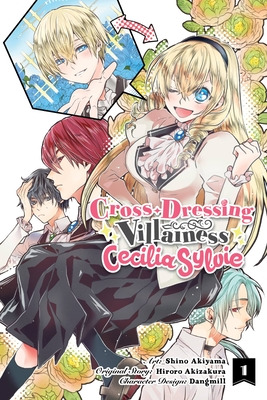
Start of a fun/silly isekai series.
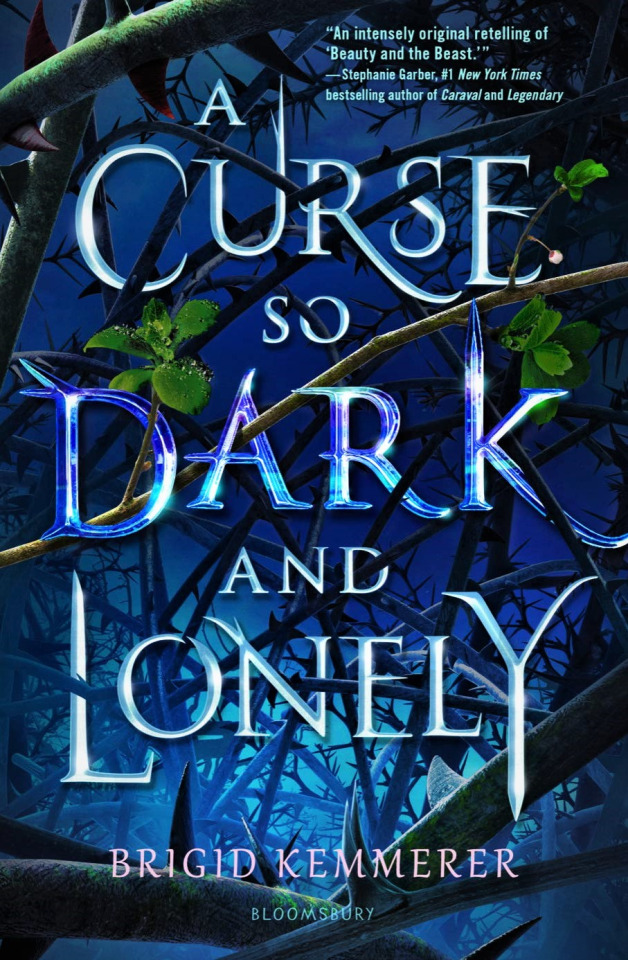
I’ll admit, I wasn’t enjoying the book at first, I liked Harper but there was a lot of “not like other girls” and the two main guys in the book were kinda dicks, but the writing itself was good and I remained curious as to the outcome and was hooked by the end.
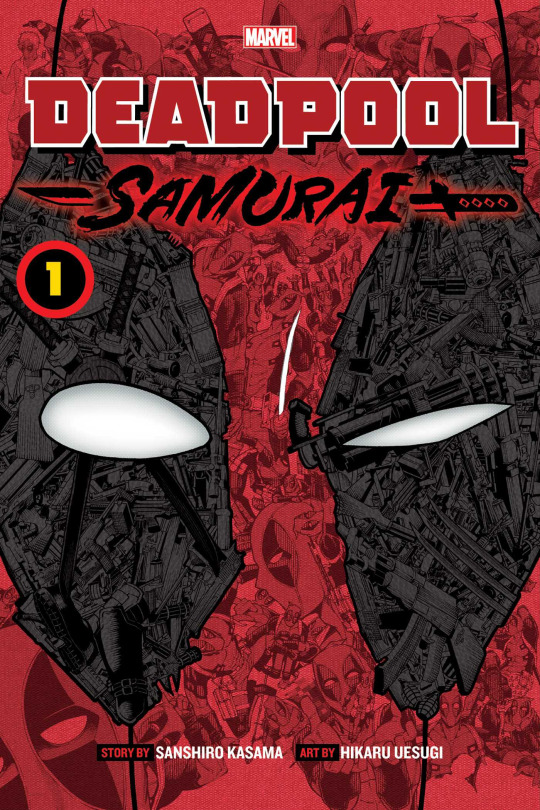
Very fun
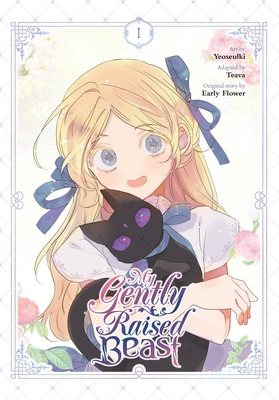
Have enjoyed this on webtoons and so was very happy to get it when it was published.
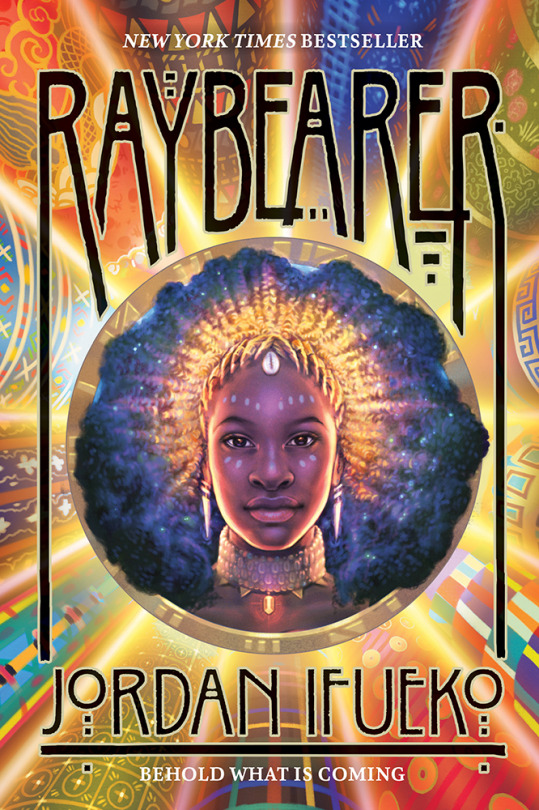
My friend got me this for Christmas and I couldn’t resist reading it right away. Very good decision on my part. ^_^

Totally picked this out of my tbr to try to meet my goodreads reading goal, I was like three or so away from it, and this is nice and short. Just a random sci-fi I had floating around from a thrift store or something but actually a delightful ya read.
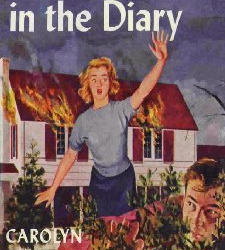
Another “complete goodreads challenge pick” but also a very fun read.
#December 2022#Booklr#Reading#Spy x Family#Tatsuya Endo#Chainsaw Man#Tatsuki Fujimoto#Magician: Apprentice#Riftwar Saga#Raymond E. Feist#crossdressing villainess Ceceilia Sylvie#Hiroro Akizakura#Shino Akiyama#A Curse so Dark and Lonely#Brigid Kemmerer#Cursebreakers#Deadpool Samurai#Sanshiro Kasama#Hikaru Uesugi#My Gently Raised Beast#Early Flower#Yeo Seulgi#Ray Bearer#Jordan Ifueko#Exiles of ColSec#Douglas Hill#The Clue in the Diary#Carolyn Keene#Nancy Drew
6 notes
·
View notes
Video
youtube
Saga di Riftwar di Raymond E. Feist
Oggi voglio presentavi una saga fantasy di cui negli ultimi anni si parla molto poco, il CICLO DI RIFTWAR, dell’autore Raymond E. Feist.
Questa ciclo formato da 10 serie in tutto e da una trentina circa di libri, scritti a partire dal 1982 fino al 2013, è ambienttao nel mondo di Midkemia, e in particolare, per buona parte, nel regno delle Isole, uno dei regni di questo mondo. Un mondo pieno di magia, valorosi guerrieri, principi, regine, draghi, elfi, nani, demoni....tutto ciò che il fantasy classico domanda ed è ispirato ai mondi delle campagne dei giochi di ruolo Dungeons&drangons a cui l’autore giocava durante l’università quando ebbe l’idea per il primo romanzo della saga. Protagonista della saga è il mago Pug dall’aspetto normale, quasi insignificante, ma dai grandi poteri, che insieme con i suoi amici e alleati, dovrà affrontare durante un periodo di circa un secolo ben 5 guerre causate da 5 rift, da cui il nome della saga. I rift sono passaggi interdimensionali che purtroppo permetteranno ai popoli di lontani pianeti e dimensioni di invadere Midkemia.
I primi tre libri della Saga di Rftwar mi sono piaciuti. Lo stile usato è chiaro e scorrevole e i personaggi interessanti. Forse mi è mancata un pò di introspezione psicologica, i personaggi a volte sono fin troppo perfetti o forti, ma al tempo stesso l’autore non ha paura di uccidere anche persone importanti a livello di trama e riesce a sorprendere il lettore o a commuoverlo. Anche se prevale l’intrattenimento sopra il sentimentalismo. Tutto è ben dosato, forse persino troppo. Quello che probabilmente mi è mancato di più in questi libri è l’imperfezione che a volte fa sì che il lettore possa capire chi era il personaggio preferito dell’autore o chi o cosa si era divertito di più a scrivere e decrivere. Le scene sono belle, l’azione è descritta benissimo, ma questa è una delle poche serie fantasy di cui non ricordavo praticamente nulla.
Nella mia vita ho letto molte serie fantasy, e naturalmente non posso ricordarmi la trama particolareggiata di tutti i libi di una serie letta decine di anni fa, ma alcune scene sono indelebili. Dei libri di Tolkien o Terry Brooks, o Lois Mac Master Bujold o Marion Zimmer Bradley ricordo molte cose, di alcuni quasi tutto, ma della saga di Rftwar non ricordavo nulla. Perciò prima di preparre questo post ho dovuto rileggere la recensione che ne avevo fatto, rileggere i libri, ristudiare la saga nella sua totalità e i vari seguiti, perchè avevo veramente tabula rasa. Nemmeno una singola scena era rimsta nella mia memoria. Eppure la mia recensione di allora era stata molto buona mi era piaciuta, ma ahimè non ha lasciato alcun segno su di me. E quetso a mio avviso significa qualcosa.
Probabilmente non mi ha colpito o coinvolto abbastanza mi ha solo intrattenuto, e nemmno in modo memorabile. Naturalmente tutto questo è soggettivo, resta il fatto che è una serie fantasy molto famosa e acclamata che consiglio comunque a tutti gli amanti del fantasy classico di leggere assolutamente
La magia è molto presente non toglie spazio alle azioni militari, ma è veramente importante e decisiva in quasi ogni libro e soprattutto è molto forte in Pug. e molto vasta, non viene limitata da così poi tante regole o vincoli e forse questa sua poca specificità è una delle cose che la rende meno personale meno memorabile. Allo stesso modo abbiamo tutti gli elementi classici del fantasy: il maghi, le sacerdotesse, gli elfi, i predecessori degli Elfi, gli dei, i nani, gli artefatti, i dragi e chi più ne ha più ne metta, ogni elemento classico del fantasy è presente così come l’impronta di Tolkien. Ma nulla prevale nulla spicca tutto è egualmente bello e interessante. I draghi ci sono ma non sono findamentali sempre solo in alcune occasioni,gli elfi idem....quasi tutti sono coraggiosi, quasi tutti sono potenti....non che non ci siano i cattivi ci sono eccome e anche loro sono forti e ben dectti con motivazioni veramente sensate e chiare ma....nessuno spicca. A parte Pug, che sovrsta tutti per importanza e presenza in quasi ogni libro e per essere spesso decisivo....ma anche lòui è persino troppo forte e importante per il suo aspetto che viene decritto come assolytamente normale. E’ potente ma anche piuttosto umile. ....e’ il protagonista ma sempre insieme a altri. Spicca ma al tempo stesso è come se l’autore nopn volesse farlo spccare troppo e questo non me lo ha reso simpatico o affascinante credetemi. Sono rimasta coinvolta dalla sua storia personale, non mi stava antipatico, anzi mi sono commossa per lui....ma non è mai stato affascinante o sorprendete ai miei occhi.
Ai miei occhi era molto più interessante il suo amico Thomas e tutta la sua storia con gli elfi che per carità è importante nella saga principale ma non viene super approfondita. come arei voluito Per me la parte affascinante di questa serie sono stati gli elfi e l’dea che due dimensioni entrino in comunicazione. Due mondi, diversi e distanti entrano in contatto e scoppia la guerra. Questo sì era qualcosa di nuovo o comunque di così non tanto già visto in altre saghe fantasy.
Comunque la trama della serie è avvicente e se amate il fantasy classico non potrete non apprezzarla. Vi sconvolgerà la vita? Probabilmente no, ma ricordiamo che è una serie nata nella mente dell’autore mentre andava all’università e giocava a Doungeons&Dragons con i suoi amici. Tutto parte da questi giochi di ruolo e soprattutto nei primi libri della saga si sente, è inutile negarlo. Poi l’autore col passare degli anni è cresciuto con essa è maturato e socuramente i libri più belli sono quelli più recenti.
All’interno di questo ciclo la prima serie da leggere, la serie pricipale da cui tutto ha inizio è la SERIE di RIFTWAR, una trilogia fortunatamente tradotta anche in italiano.
SERIE DI RIFTWAR:
1.Il signore della magia (1982)
Autore: Raymond E. Feist
Titolo originale: Magician
Link: https://amzn.to/41T96kW
Trama: Sulle rive di Crydee, un tranquillo avamposto di frontiera del Regno delle Isole, su Midkemia, un orfanello di nome Pug si sforza di apprendere i segreti dei grande Mago Kuigan. Il giovane - che grazie al suo coraggio si è conquistato un posto a corte e le simpatie di una giovane principessa dimostra un notevole talento magico, però si trova misteriosamente a disagio con gli incantesimi più comuni e consueti. Poi, un giorno, in modo del tutto inatteso, le annate di un popolo proveniente da un altro mondo si affacciano alle porte del Regno, minacciandone il futuro… Neanche l’inesperto Pug potrà sottrarsi ai conflitto e, insieme con l’amico guerriero Tomas, affronterà una lunga serie di avventure, che lo porteranno a ottenere il controllo di una magia mai vista, eppure da sempre presentita, nonché a scoprire il segreto dei misteriosi nemici e dello scontro in atto tra Midkemia o l’oscuro mondo di Kelewan…
2. L’incantesimo di Silverthorn (1985)
Autore: Raymond E. Feist
Titolo originale: Silverthorn
Link: https://amzn.to/3MGfN5C
Trama: La guerra tra i mondi di Midkemia e Kelewan si è conclusa: il Regno delle Isole si prepara a vivere un periodo di pace e a festeggiare il matrimonio tra il principe Arutha di Krondor e la principessa Anita. Ma la tragedia è in agguato: nel giorno delle nozze, la principessa e colpita da una freccia imbevuta di un’erba velenosa nota come Silverthorn, così rara e misteriosa che tutti i rimedi conosciuti per contrastare i suoi effetti risultano inutili. E mentre la vita della giovane si spegne lentamente, Arutha si convince che l’unica speranza per salvarla sia spingersi fino nella lontana Sarth, dove sorge un’antica abbazia che custodisce più conoscenze di qualsiasi altro luogo del Regno. Così, in compagnia di un mercenario. di un menestrello e di un giovane ladro, il principe si mette in cammino…
3. Scontro a Sethanon (1986)
Autore: Raymond E. Feist
Titolo originale: A Darkness at Sethanon
Link: https://amzn.to/3Oo7kFq
Trama: Le legioni delle tenebre si sono risvegliate per annientare il Regno delle Isole. Il mago Pug e Tomas devono scoprire l’origine della forza malefica che rischia di inghiottire il loro mondo. Dal tempo dei Signori dei Draghi di Midkemia, mai le forze del Caos hanno raggiunto tanto potere, quindi Pug e Tomas devono intraprendere l’ultima impresa che li porterà dalle remote terre di Kelewen fino all’alba del tempo, per combattere la battaglia finale contro chi vuole annientare il loro mondo.
A QUESTA TRILOGIA SI SONO POI AGGIUNTE TANTE ALTRE SERIE CHE SONO SIA SEQUEL DELLA SAGA PRINCIPALE SIA SPIN OFF MENO DIRETTTAMENTE E CRONOLOGICAMENTE COLLEGATI AD ESSA.
MA IO RITENGO CHE SOLO 4 di queste serie arricchiscano la serie principale in modo importante, introducendo nuove figure che si riveleranno fondamentali ai fini della trama e raccontando eventi muteranno per sempre le vite dei personaggi della serie, e sono naturalmente le 4 serie corrispondenti ai 4 RIFT che avvengono nel ciclo dopo la serie princpale, poichè ogni volta che un rift, un passaggio verso un’altra dimensione, si apre ne segue sempre caos e guerra:
The Serpentwar Saga
Ambientata circa 50 anni dopo la trilogia principale, dopo un secondo Rift, dopo che si è creato un secondo pasaggio con un altra dimensione. Midkemia è invasa da uomini lucertola, che stanno sfuggendo a un invasione di demoni sul loro mondo d’origine.
Shadow of a Dark Queen, 1994
Rise of a Merchant Prince, 1995
Rage of a Demon King, 1997
Shards of a Broken Crown, 1998
The Darkwar Saga
Ambientata poco dopo la serie Conclave e quindi circa 30 anni dopo il Secondo Rift, e la serie Serpentwar. Accade un Terzo Rift e stavolta la Conclavedelle ombre deve cercare di fermare l’invasione dei Dasati; una razza proveninte da un altra dimensione dominata dalle forze del male.
Flight of the Nighthawks,2005
Into a Dark Realm,2006
Wrath of a Mad God,2008
The Demonwar Saga
Solo 10 anni dopo il Terzo Rift, ecco aprirsi un Quarto Rift, e stavolta dal passaggio pronti a invadere Midkemia arrivano degli elfi guerrieri in fuga da forze demoniache che finiscono pure loro per arrivare su Midkemia.
Rides a Dread Legion, 2009
At the Gates of Darkness, 2010
The Chaoswar Saga
Ambientata dopo un Quinto Rift subito dopo la Demonwar serie di cui è un diretto seguito vede l’invasione del Regno delle Isole da parte dell’Impero Kesh.
A Kingdom Besieged, 2011
A Crown Imperiled, 2012
Magician's End, 2013
LE ALTRE 5 SERIE che FEIST ha scritto, arricchiscono certamente la serie, ma li vedo come più degli spin off che potrebbero anche venir saltati senza togliere poi molto alla trama principale. Opinione mia e vi consiglierei di leggerli solo se avete amatoin modo particolare alcune parti dei libri principali.
Ad esempio vi appassionano le lotte politiche di Midkemia, gli intrighi di corte, L’impero Kelean e Krondor, allora certamente vi consiglio di leggere le serie:
Kelewan Empire
con Janny Wurts, Daughter of the Empire, 1987
con Janny Wurts, Servant of the Empire, 1990
con Janny Wurts, Mistress of the Empire, 1992
Krondor's Sons
Prince of the Blood, 1989
The King's Buccaneer, 1992
The Riftwar Legacy
Krondor: The Betrayal, 1998
Krondor: The Assassins, 1999
Krondor: Tear of the Gods, 2000
Vi interessa invece di più il lato magico della storia, i maghi, la scuola di magia? Allora dovete certamente leggere la serie:
Il Conclave delle ombre:
L'artiglio del falco d'argento (Talon of the Silver Hawk, 2002), Nord, 2003
Il re delle volpi (King of Foxes, 2003), Nord, 2004
L'esilio del tiranno (Exile's Return, 2004), Nord, 2006
Per quanto riguarda la serie Legends of RIftwar, questa poi non la chiamerei neppure serie sequel, è proprio uno spin off ed è formata da libri tra loro scollegato tra l’altro che invece si legano da ltri libri della saga approfondendone alcuni personaggi molto secondari. Quindi la lettura di questa potete saltarla a meno che siate veri fan di questa serie e volete leggere tutto ciò che c’è da leggere su questo universo.
Legends of the Riftwar
con William R. Forstchen, Honoured Enemy, 2001 (pubblicato anche come Honored Enemy)
con Joel Rosenberg, Murder in LaMut, 2002
con S. M. Stirling, Jimmy the Hand, 2003
Jimmy and the Crawler, 2013
SE INVECE VOLETE IMMERGERVI TOTALMENTE IN QUESTO MONDO e LEGGERE L’INTERA SAGA IN ORDINE CRONOLOGICO DEGLI AVVENIMENTI NARRATI, L’ORDINE GIUSTO E’ QUESTO
1. Serie di Riftwar (la serie principale il fulcro del ciclo)
2. Serie Legends of the Riftwar (ambientata tra il primo e il secondo libro della trilogia principale)
3. Serie Kelewan Empire (ambientata durante la prima trilogia principale)
4. The Riftwar Legacy (ambientata 10 anni dopo gli avvenimenti di Scontro a Sethanon)
5. Serie Krondor's Sons (dedicata alle avventure dei figli del principe Arutha e ambientata 20-30 anni dopo la trilogia principale).
6. Serie The Serpentwar Saga (ambientata 50 anni dopo la fine della trilogia principale dopo il secondo Rift)
7. Serie ll Conclave delle ombre (ambientata circa 30 anni dopo la serie Serpentwar)
8. Serie The Darkwar Saga (ambientata qualche anno dopo il Conclave dopo il terzo rift)
9. Serie The Demonwar Saga (ambientata dopo il quarto rift, 10 anni dopo Darkwar)
10. Serie The Chaoswar Saga (ambientata dopo il quinto rift poco dopo la Demonwar serie)
3 notes
·
View notes
Text
“Fear is the little death, daughter. It kills in tiny pieces.”
Raymond E.Feist, Daughter of the Empire
#books#book quotes#bookshelf#booklr#bookworm#quote#bookaddict#booklover#booknerd#book blog#raymond e. feist#daughter of the emperor#fantasy#fantasy books
3 notes
·
View notes